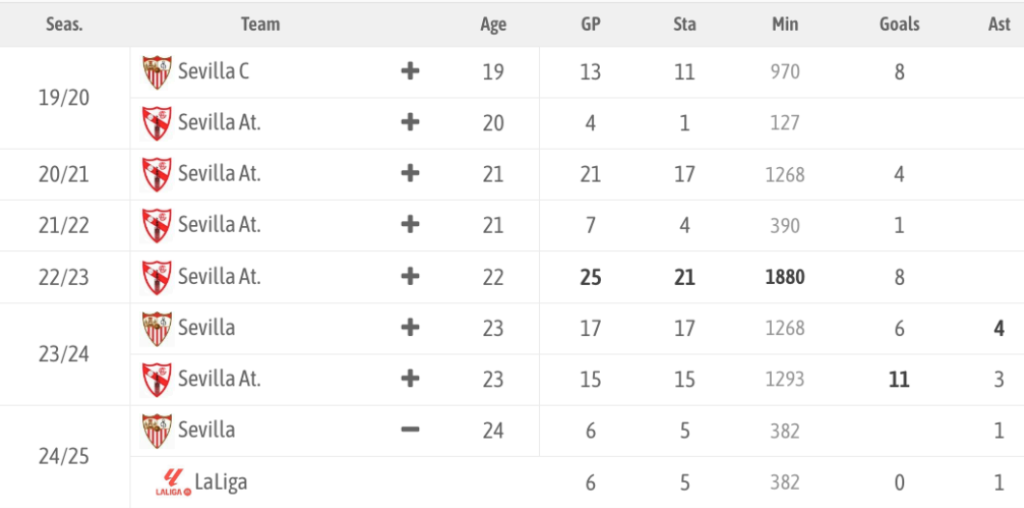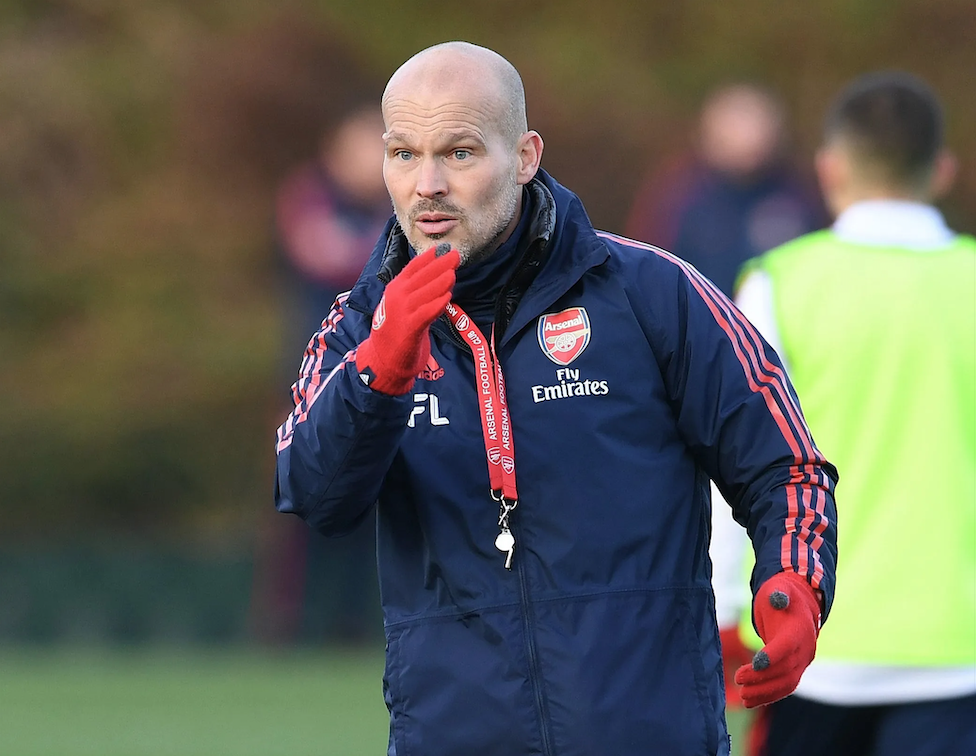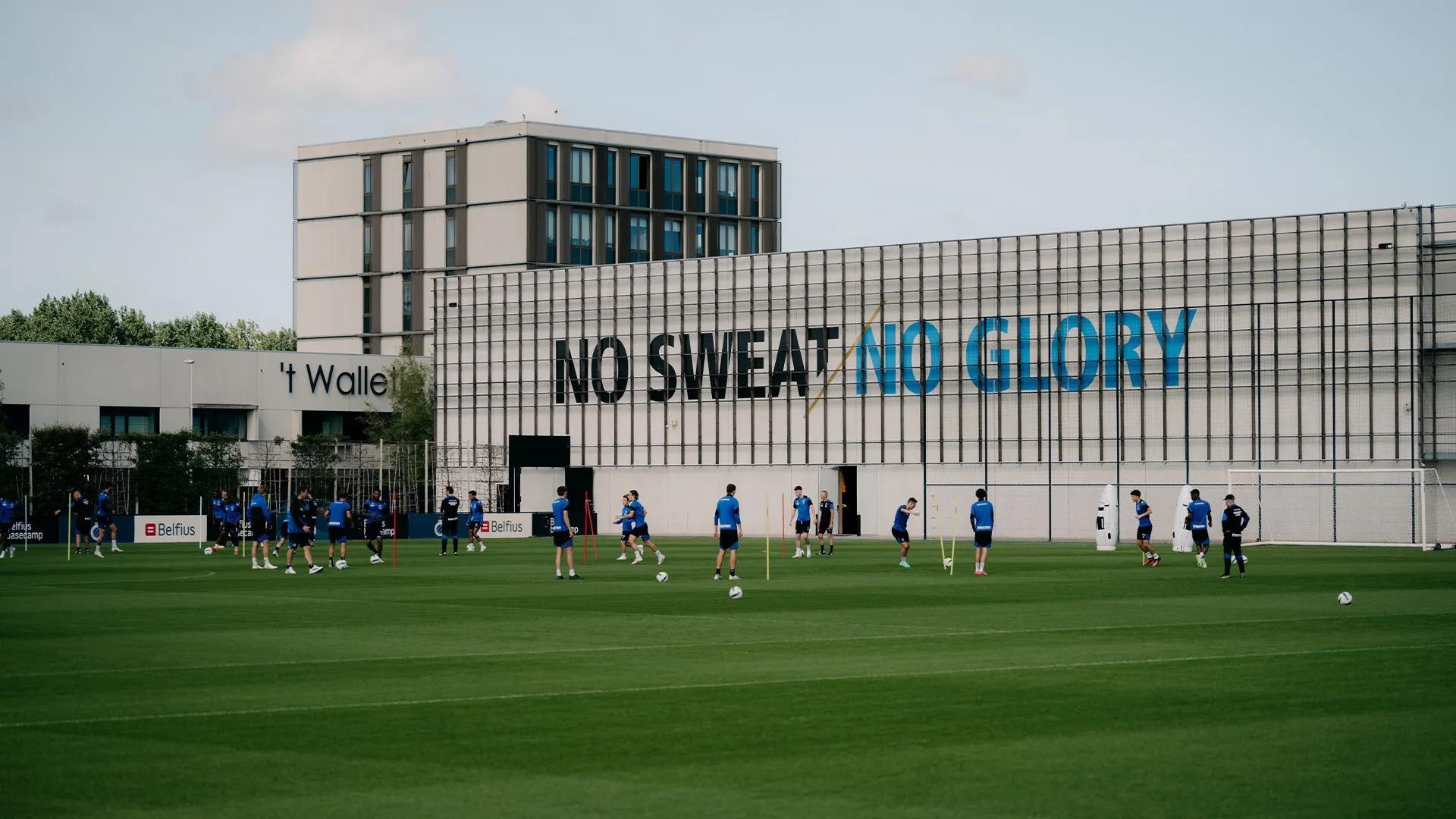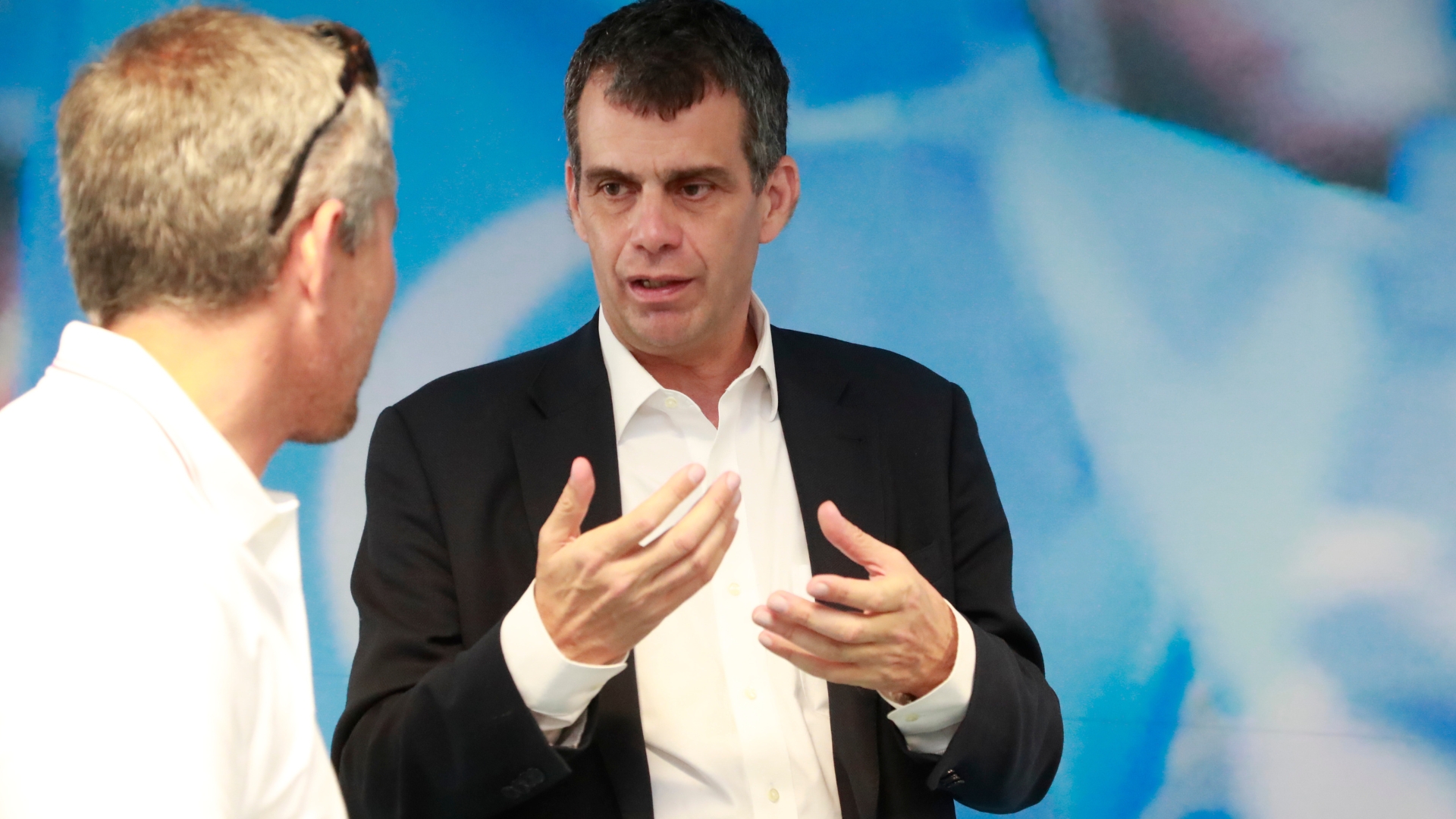For any football club, a successful youth development strategy is essential both for sporting success and also for long-term financial sustainability. Sporting directors in collaboration with academy director must ensure that academy players are systematically prepared for first-team exposure while maximizing their long-term value to the club.
This requires a comprehensive, structured approach—one that integrates youth into the club’s fabric, from training to transfers.
Álvaro López Molina, Director of Scouting at ACA Football Partners, created this comprehensive guide as part of his learning journey in the Mini MBA Sporting Directorship program.
Alvaro outlined steps required to develop young talents, integrate them into the first team, and maximize their potential value for the club, with support from every level of the club.
1. Creating a Structured Pathway to the First Team
A clear and well-communicated pathway from the academy to the first team is crucial for young players’ development. This pathway must include training opportunities, mentorship, and gradual exposure to competitive matches.
- Clear Progression Plan: Developing a detailed progression plan for academy players is essential. This plan should outline the milestones that lead to first-team opportunities and be communicated clearly to players, coaches, and their families. Alignment on development goals across all stakeholders ensures that expectations are managed, and the path to success is clear.
- Training Opportunities: Regular joint training sessions with first-team players allow younger players to experience the pace, intensity, and professionalism of senior football. This helps them adjust to the demands of the game and makes the transition to the first team smoother when the opportunity arises.
- Mentorship Programs: Pairing young players with senior pros is a proven method of fostering both personal and professional growth. Mentors offer practical advice on how to navigate the pressures of elite football, helping younger players prepare mentally and physically for the challenges ahead.
- Club Culture: A strong club culture that promotes values, mission, and vision from the very beginning is vital. Setting a clear direction for both players and staff ensures that everyone is aligned toward the long-term goals of the club.
Proof of Success: Theo Leoni’s story is an excellent example of the power of a structured pathway. Despite being a late bloomer, Leoni played in Anderlecht’s U23 team until the age of 22. His patience, coupled with a well-defined development strategy, saw him mature into a first-team player, demonstrating that not all talent peaks early, but with the right framework, success is still achievable.

2. Building a U23 Team: The Development Bridge
For players who are not yet ready for senior football but have outgrown the academy, a U23 team serves as a critical transitional phase. It offers the competitive environment needed for development while maintaining alignment with first-team tactics.
- Purpose of the U23 Team: The U23 team bridges the gap between youth levels and the first team, providing a space where players can develop at a higher level without the immediate pressure of first-team football. This system creates a competitive environment that mirrors the first team’s playing style and intensity.
- Integrated Training: Regular integration between the U23 and first teams is essential. Training alongside senior players familiarizes younger athletes with the physical and tactical demands of first-team football, making the eventual transition smoother.
- Match Opportunities: Scheduling friendlies or participating in U23 leagues ensures that players get regular game time against competitive opposition. These matches are critical for young talents to gain experience, build confidence, and test their skills in real-world scenarios.
- Maximizing Value from U23 Players: Not every player will make it to the first team. However, clubs can still derive value from U23 players by selling them early, which helps generate revenue and reinvest in future talents. The U23 team thus becomes both a development ground and a financial asset.
3. Gradual Introduction in Low-Risk Games
One of the most effective ways to integrate young players into the first team is through low-risk match scenarios. This allows young talents to gain confidence without the high pressure of critical matches.
- Controlled Exposure: Giving young players match time in cup games, friendlies, or when the team is comfortably ahead in a match provides a learning experience without risking the game’s outcome. This helps players adjust to the pace and pressure of senior football gradually.
Proof of Success: Isaac Romero, who trained with both Sevilla’s second and first teams during the 2022-23 season, is an example of how a U23 player can gradually integrate into the first team. He started by playing in lower-stakes matches like cup games and friendlies, and his performance earned him a contract with the senior squad.

4. A Structured Loan System: Gaining Experience While Maximizing Value
A structured loan system plays a crucial role in player development, allowing young players who aren’t yet ready for the first team to gain regular match experience elsewhere.
- Loan System Structure: A well-managed loan system provides players with the opportunity to develop through regular match time, either to sharpen specific skills or gain general experience. By loaning players to clubs at the same or lower division levels, the club ensures that its players continue developing in competitive environments.
- Loan Manager: Appointing a dedicated Loan Manager is key to ensuring that the players’ performance aligns with the club’s development objectives. The Loan Manager stays in contact with loaned players and their respective clubs, tracking progress and ensuring alignment with the club’s standards.
- Loan Partnerships: Establishing strong partnerships with domestic and international clubs creates strategic opportunities for loan placements. Choosing clubs that align with the player’s development needs—whether tactical, physical, or positional—maximizes the benefits of the loan system.
Proof of Success: Gorka Guruzeta’s development through well-timed loan spells is a testament to the effectiveness of this system. By strategically placing him in environments suited to his growth, Athletic Bilbao was able to bring him back to the first team as a more refined player.

5. Key Development Figures in Youth Progression
Effective youth development requires the right people in place, working closely together to ensure that every player has a clear path to success.
- Development Performance Manager: This role focuses on the individual development of players, tracking their progress closely, setting development goals, and ensuring that every player is on the right trajectory. By working alongside the coaching staff and performance analysts, the Development Performance Manager ensures that no player falls through the cracks.
- 3rd/Assistant Coach for Young Players: Assigning an assistant coach specifically dedicated to younger players ensures that their training is tailored to their needs. This coach focuses on technical and tactical drills that prepare younger players for first-team football, making their development more focused and efficient.
- Head of Scouting for Youth: The Head of Youth Scouting plays a pivotal role in recruiting new talent. This figure ensures that scouts focus on both early bloomers and late developers, helping to build a balanced squad capable of sustaining long-term success. This holistic approach to scouting increases the likelihood of unearthing hidden gems.
Proof of Success: Freddie Ljungberg (Arsenal): Arsenal’s Freddie Ljungberg is a prime example of the value of a dedicated development coach. His hands-on approach with Arsenal’s younger players was instrumental in several players’ transition to the first team.

6. Collaboration with Coaching Staff
A unified coaching philosophy between the academy and first team ensures that young players can easily adapt when transitioning to the senior squad.
- Unified Playing Style: Ensuring that both the academy and first team play with a consistent tactical style makes it easier for players to move up through the ranks. This alignment allows younger players to step into the first team with a greater understanding of the club’s playing principles.
- Close Communication: Regular communication between the academy staff and first-team coach is essential for identifying standout youth players and giving them opportunities to train or play with the senior squad. Collaboration ensures that both parties are on the same page regarding player development.
- Data and Analytics: Leveraging data-driven insights helps track players’ performance metrics, identifying when a player is ready for the first team. This analytical approach ensures that decisions are based on objective performance measures rather than subjective opinions.
7. Maximizing Player Value Across the Club
Ensuring that young players deliver value, whether on the field or in the transfer market, requires a club-wide commitment.
- Board Support: Securing the board’s buy-in is critical. By presenting the long-term financial and sporting benefits of youth development, directors can ensure that youth promotion becomes a key part of the club’s broader strategy.
- Senior Player Involvement: Involving senior players in mentoring younger talent creates a supportive atmosphere. Senior players can guide their younger counterparts, offering advice and leadership, which helps cultivate a cohesive team dynamic.
8. Maximizing Players’ Value
Beyond the pitch, clubs can take proactive steps to maximize the market value of their young players, ensuring their investment pays off, whether through on-field success or strategic transfers.
- Focus on Mental Development: Providing support for the mental development of young players is crucial. Sports psychologists can help players cope with the pressures of professional football, enhancing both their performance and their market value.
- Media and PR Exposure: Working with the club’s media team to showcase young talent through social media or local press can increase their profile and value. Positive exposure not only helps their marketability but also raises their visibility for potential transfers.
- Long-Term Contracts: Securing promising young players with long-term contracts is essential for protecting the club’s financial interests. Long-term contracts ensure that when players become transfer targets, the club is well-positioned to negotiate higher fees.
9. Scouting System for the Youth Academy
An effective scouting system is essential for consistently identifying and recruiting new talent that can develop within the club’s youth setup.
- Focus on Long-Term Potential: Rather than just identifying immediate performance, scouts must focus on players with high intelligence, tactical awareness, and growth potential. While some players may excel physically early on, those who demonstrate a deeper understanding of the game are more likely to become key first-team contributors in the long run.
- Diverse Scouting Networks: Expanding scouting networks to include players from underexposed or underdeveloped markets allows clubs to identify hidden talent. By scouting in a variety of regions and focusing on different types of maturity and development, clubs can form more balanced squads.
Proof of Success: Ajax’s acquisition of Mika Godts from Jong Genk in 2023 exemplifies the effectiveness of a well-rounded scouting system. Godts was identified as a promising young player despite limited first-team experience, and Ajax capitalized on his potential by signing him to a long-term deal, with both Jong Ajax and the first team benefiting from his talents.

10. Expanding Scouting Beyond the Academy
A strong scouting network must extend beyond just the youth academy to the global stage. Focusing on international talent not only strengthens the first team but also enhances the club’s financial standing.
- International Scouting Focus: By scouting in less-developed footballing countries, clubs can find hidden gems with untapped potential. Nations such as Venezuela, Georgia, and Luxembourg offer talented players who may have fewer opportunities in their domestic leagues but can thrive in more competitive environments.
- First-Team Potential: Scouting should not only focus on academy players but also on identifying high-potential first-team players. This enables clubs to develop a continuous stream of talent capable of strengthening the first team while also increasing transfer market opportunities.
- Transfer Market Focus: By acquiring young players with high potential from international markets, clubs can develop these talents into assets that can either strengthen the first team or be sold for profit, contributing to the club’s financial sustainability.
Proof of Success: The outcome of KMSK Denize’s expansion in scouting underrated talents and lesser-known leagues was highlighted by the transfer of a player like Teo Quintero, who, after two succesful seasons, secured a move to Sparta Rotterdam.

In summary, the success of a youth development strategy lies in creating a structured, purpose-driven pathway that integrates young talent into the first team while ensuring the club maximizes its financial and sporting value. By establishing a U23 team, we provide a crucial bridge between the youth academy and the first team, allowing players to develop in a competitive environment. Simultaneously, the loan system serves as a key tool for providing players with regular match experience, managed strategically by dedicated figures like a Loan Manager and Development Performance Individual Manager.
Moreover, focusing on a smart scouting system, not only within the academy but also internationally, ensures we identify players with high potential who may either become key first-team players or valuable transfer assets. It is equally important to remember that not every player will reach the first team, but through strategic sales of U20 and U23 players, we can still generate revenue and reinvest in future talent.
Above all, creating a strong club culture based on clear values, missions, and a shared vision ensures that every employee and player understands their role in the club’s long-term success. By implementing this approach, the club will not only nurture its youth prospects but also build a sustainable model for future growth, both on and off the pitch.
Explore our Academy Management and Talent Development Program
Learn proven strategies to make your academy a progressive center of talent development.











